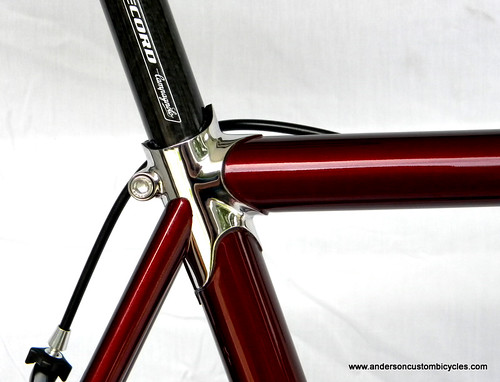A bit of a tangential post from what I normally write about here, but please bear with me.
This is what the adult "No Girls Allowed!" sign looks like:
My day job is in electronics. I design itty-bitty little chips that go in radiotelescopes. It's an awesomely cool job that lets me express my creativity in ways I never would have dreamed possible. My workmates are wonderful people, and we have a truly fantastic workplace. To put it bluntly, my job rocks.
But there's one small catch. I am the only female electronics engineer in the place. We have heaps of female astronomers, a few female managers, rather too many female admin staff, and a few female techs. But just the one female engineer. And even then, I'm hardly a typical woman. I ride motorbikes and build bicycles. I used to play footy. Generally things guys do.
So a month or so ago we had a workshop at work for women in science. It was run mainly by the astronomy group, who had a pile of really useful things to say to help women in science careers - stuff around ensuring the workplace is family friendly, making allowances for career breaks for when women take time off to have babies - that sort of thing.
At one point, people noticed that I was the only woman there from the engineering groups, so I was asked what I thought should be done to increase women's participation in engineering. I really didn't know (and said as such), but it did get me thinking about the subject.
This morning I dropped into uni to talk with my supervisor. As I was leaving I passed one of the undergrad electronics labs. You know the sort of place - rows of benches each with an oscilloscope and function generator bolted to them, with a rack of test leads on the wall. All good stuff. I remember many a lab session spent building little amplifiers and oscillators and other cool stuff.
So that's where I saw the sign. A really big one - you couldn't possibly miss it. Right on the door.
No Open Toed Shoes in Lab
Now seriously, this is a uni undergrad electronics lab. All the heavy stuff is bolted to the bench, to stop people from stealing it. The worst thing you could drop on your feet is a multimeter.
But still the sign. It brought back memories of being kicked out of labs as an undergrad myself, for, you guessed it, wearing sandals. That unforgivable sin committed by, what, ninety percent of the female population of any university, at least in summer.
I can see how the reasoning goes - similar reasoning applies in my workplace. "Labs are dangerous places, full of heavy things." "We should ensure people wear the appropriate PPE."
So then some middle-aged male lab manager puts up the sign. To him it appears perfectly reasonable - after all, he wouldn't be caught dead in sandals. Never mind that the computing lab down the hall has just as much heavy stuff that could fall on your feet. Or the library...
Of course, if the PPE needed is safety glasses, or hearing protection, there's some provided, right there, hanging from a hook. Not so with closed toed shoes though, because it's only women that don't wear those.
And so another small barrier is put up between women and a career in engineering.
So in answer to the question that I was asked in the women in science workshop: It's not one thing, it's a multitude of tiny little annoyances. It's the no open shoes allowed sign. It's the dumb little trick question in the HSC physics exam that means that you have to be particularly good at vector maths in order to answer a question that is really straightforward and simple in itself. The list goes on. Each one in isolation isn't going to do any measurable harm, but when they're combined, they're a formidable hurdle.
So if you're in a position where you're making such decisions, please stop and think for a moment if what you're about to impose on people will have a negative effect on women and girls. If it does, then do you really need to do it? The open toed shoes bit is an obvious example - when your work area isn't really any more dangerous than a typical office, don't impose PPE standards that are discriminatory. And when the PPE is truly warranted, have a cupboard full of the things that people can use. You don't expect people to wander around wearing safety glasses all day, do you?

























